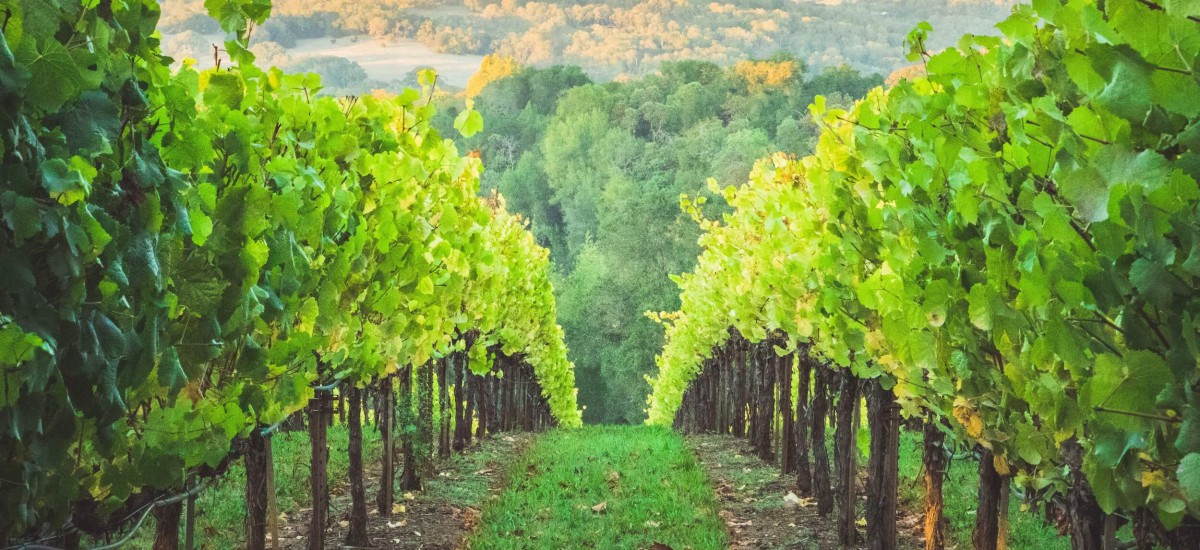
Wine Is Fundamentally Made in the Vineyard
Our tasting room has been closed for 8 weeks now. However, our vineyards are full of spring energy. We invite you to think about a year in the life of a grape vine. But first, pour a glass of wine.
While you sip, imagine walking through an old growth vineyard in midwinter. It looks barren. The stumpy vines are twisted and hunched over, broken looking and defeated. It is as though life is on pause. They will sit with their roots grabbing the earth, reaching 20 feet or more down between slate, shale, and hard clay, brittle barnacles on an unforgiving landscape. They will ride out torrential rain, flooding, hail beating down and ripping off bark. They will gleam in the frost that turns each vine into a fantastically contorted ice sculpture, twinkling as they melt and drip in the morning sunlight, which will come earlier and earlier each day with the coming of spring, until one day it will shine upon a tiny shoot with a feathered green tip bursting forth from underneath the tufty bark. Just like that, the wait for life is over — the promise of a new harvest held in the great vine’s new little appendage, barely larger than a daisy petal.
In a few short months this shoot and others like it will have grown into long branches covered in crisp fresh leaves, each unfurling like a yawn and stretch greeting the morning as though after a long refreshing night’s sleep that lasted the whole winter, growing so vigorously that they will have to be trained into a trellis lest they collapse under their own weight, so zealously do they worship and pursue the sun. And then, after a long summer of sunbathing and dancing in the breeze, they will celebrate by crowning themselves in little white flowers – nothing garish, nothing compared to the roses which grow around them, but the rose, another vine, the rose’s yearly roses are its great triumph, they are its final bow, but this vine’s flowers are a dainty herald of what is to come, like those thrown before the feet of newlyweds. In the same moment that the flowers fade, they are replaced by the smallest little inkling of a grape cluster, what will become each grape barely a green fleck, but the vine’s summer has not been wasted, and it will give all that it has into swelling and plumping out those grapes, safe under a canopy of leaves.
That these grapes, untouched by the hand of man, will catch the necessary airborne yeasts upon their skins such that when their skins, whether by falling to the ground or the peck of a bird or under the pressure of their own plumpness, become torn, the juice inside will start to ferment, and wine will be made with nature as the vintner – this is the reason why so many have come to worship wine, and the aiding of the natural process of winemaking in whatever human way we are able can feel for those who participate like they are serving some divine process. If we could help flowers to bloom, we would. For us, assisting a vine create its yearly wine is equally humble before the wonder of nature.
We know that grape wine consumption stretches back a minimum of 8,000 years. As an annual process it has captured the imaginations of dreamers since humanity first recorded its thoughts for posterity. While the labor of the modern vintner is essential in crafting the balanced, ageable, and delectable wines some of us are lucky enough to take for granted, wine is fundamentally made in the vineyard. When a vine has successfully taken hold and grown its roots deep, there are very few forces in nature that can upset its annual cycle of apparent death and rebirth. The vine knows how to make the most of the good times of the summer months. And it knows how to rest and bide its time during the winter. We have tried to learn something profound from this pattern for thousands of years: for the Ancient Greeks, the god Dionysus was the god of death and rebirth, and also of wine, an elixir which, made through the magical bubbling process of fermentation, has rightly appeared as a miracle in broad daylight to hundreds of generations of winemakers. The lesson of the vine is of the value of patience. It is of the inevitability of life ultimately flourishing year after year.
The lesson of wine is that some good things can be stored and kept for when the good times are less easy to come by, for midwinter evenings when the long days of carefree summer seem impossibly distant.
While so much is on pause for so many right now, we invite you to have faith in the lesson of the vine, while enjoying the lesson of wine. Enjoy the bottles in your cellar. Pull out the good vintages, the good memories, and revisit them. And know that the vine promises there will be more to come. And when this worldwide winter is over we will grow and flourish and enjoy our time in the sun all the more. We look forward to toasting to the sun, and life, and to all the new heroes among us when that time comes. We wish you well, and how that you are sharing small joys with people that you care about, and are drinking good wine, and above all, staying safe and well.
